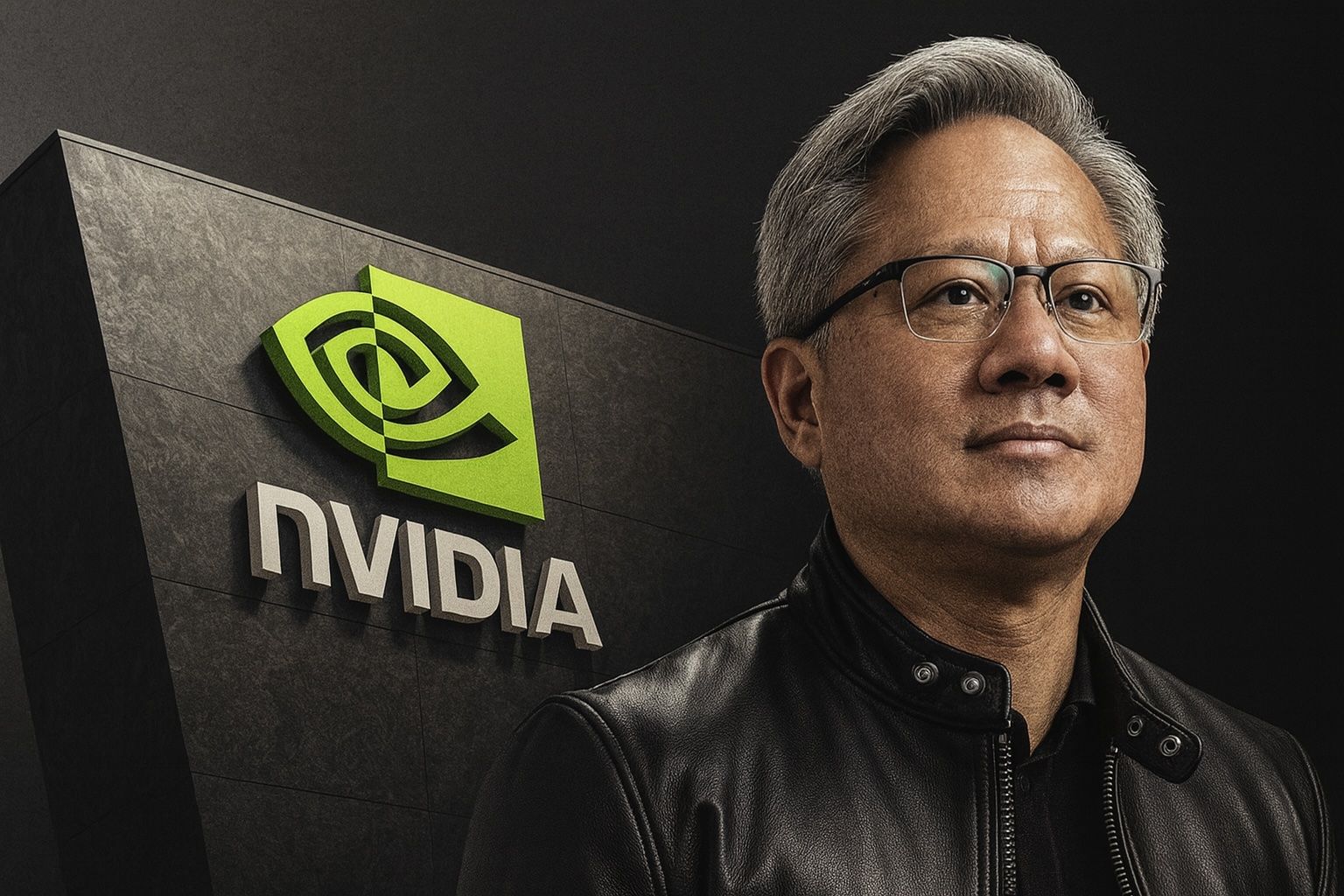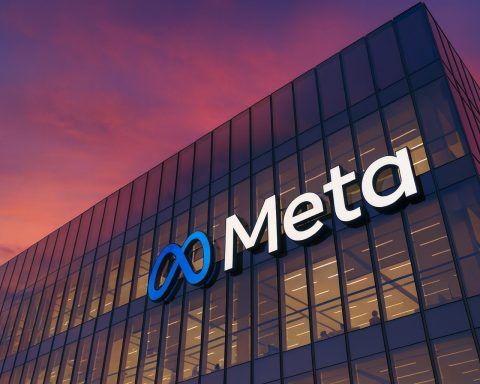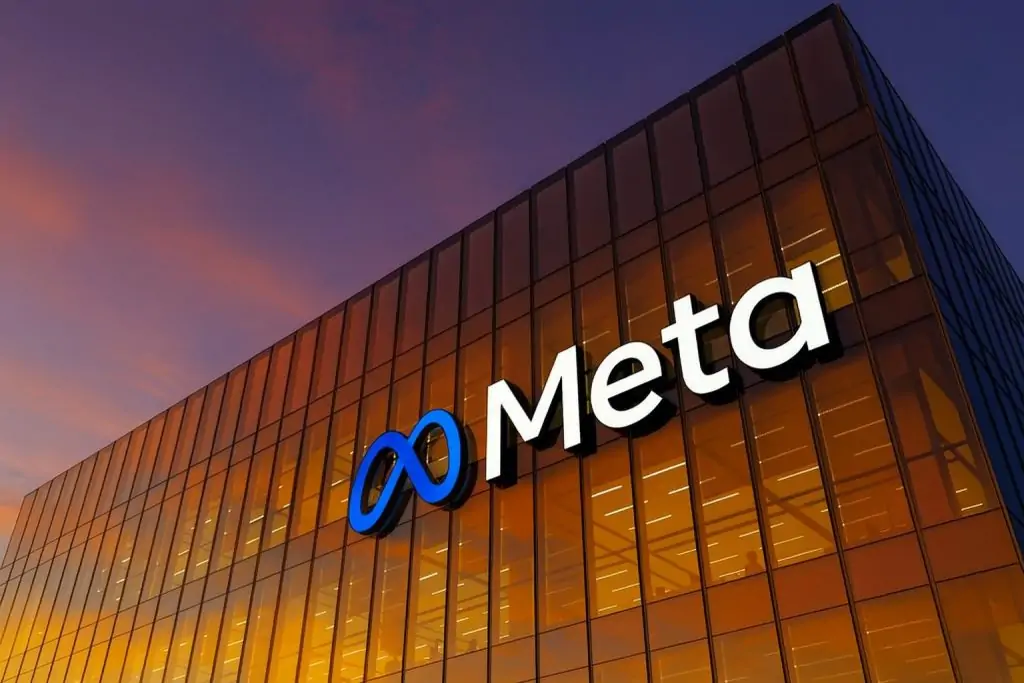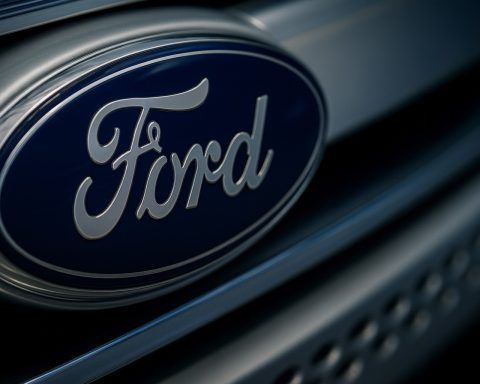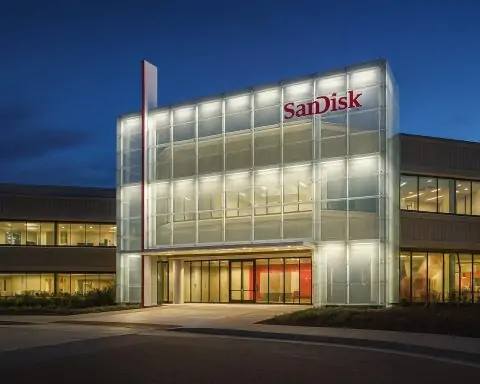Published: November 18, 2025
As President Donald Trump’s aggressive tariff agenda reshapes global trade, investors are scrambling for ways to protect their portfolios from rising import costs, supply chain disruptions, and increasingly jittery stock markets.
One exchange‑traded fund (ETF) has suddenly moved to the center of that conversation: the iShares U.S. Tech Independence Focused ETF (ticker: IETC). Multiple financial outlets have highlighted IETC this week as a potential “tariff‑resistant” way to put even a small sum — say $100 — to work in U.S. technology stocks that lean heavily on domestic production and revenue. [1]
Here’s how today’s tariff headlines intersect with this niche ETF — and what long‑term investors should understand before jumping in.
Tariffs Now Dominate the Market Story
Trump’s second term has been defined economically by the baseline and reciprocal tariff regime introduced earlier this year, which raised levies across a wide range of imports and gave the White House broad discretion to ratchet them higher. [2]
The goal, according to the administration, is to bring manufacturing and “strategic industries” back onshore. But the economic scorecard is mixed:
- Manufacturing contraction: The latest ISM Manufacturing PMI shows U.S. factory activity has shrunk for eight months in a row, with weakness across new orders, production, employment, deliveries, and inventories. Survey commentary points directly to tariff costs and uncertainty as key drags. [3]
- Tariffs paid at home: Despite political rhetoric that foreign exporters would shoulder the bill, research cited by Goldman Sachs suggests U.S. companies and consumers are absorbing the majority of tariff costs — an estimated 77% of the burden, with consumers alone paying about half of the resulting price increases. [4]
- Market valuations under pressure: Even before November’s pullback, the S&P 500’s forward price‑to‑earnings multiple climbed above 23, a level seen only once in the last 25 years (during the 2020–2021 post‑pandemic boom). That combination — slowing data plus rich valuations — has investors on edge. [5]
Today (November 18), that unease is visible across global markets: major indices are logging their fourth straight day of declines, with particular concern over stretched valuations in AI‑linked technology names. [6]
Against this backdrop, the appeal of an ETF built around resilient, domestically focused tech businesses becomes easier to understand.
Today’s Tariff Headlines: Exemptions, Rollbacks, and Political Fights
Tariff policy hasn’t been one‑directional. Alongside sweeping levies, the Trump administration has been carving out targeted exemptions and rollbacks, generating fresh headlines today:
- Food imports get relief: An executive order signed on November 13 removed or reduced tariffs on a range of imported foods — including beef, tomatoes, coffee, and bananas — that the U.S. cannot produce in sufficient quantities. [7] Industry reports today highlight how the coffee exemption, in particular, should ease pressure on mass‑market coffee prices after months of elevated costs. [8]
- Emerging‑market exporters benefit: South African oranges secured a U.S. tariff exemption ahead of the 2026 citrus season, reversing a 30% tariff that had only partially hit the 2025 crop. Growers say the move will stabilize prices for American consumers and support jobs in South Africa’s citrus regions. [9]
- Rollback for Indian farmers: Over the weekend, Trump scrapped tariffs on more than 200 food items from India, including coffee, spices, and tea, offering long‑awaited relief to Indian exporters who had been hit harder than competitors in Europe and elsewhere. [10]
- Tariff rebate checks in doubt: Politically, the administration’s proposed $2,000 “tariff dividend” checks to households look increasingly unlikely. Betting‑market coverage today suggests the implied odds of those payments ever going out have sunk to around 2%. [11]
At the same time, a fresh analysis published this morning warns that the combination of steep tariffs, slowing manufacturing, and still‑lofty stock valuations could set the stage for deeper market volatility. [12]
For investors, the message is clear: tariffs are not going away — but they are evolving rapidly, sector by sector. That puts a premium on companies (and funds) whose revenue and supply chains are less exposed to cross‑border shocks.
What Exactly Is IETC?
iShares U.S. Tech Independence Focused ETF (IETC) is a thematic ETF from BlackRock’s iShares franchise, launched in March 2018. [13]
According to its investment objective and overview:
- The fund targets U.S. companies with significant “technology exposure” — defined using a proprietary classification system.
- It aims to “increase exposure to U.S. firms with a greater proportion of technological capabilities, revenues, and production in the U.S. and select global markets” relative to its internal benchmark. [14]
- BlackRock explicitly pitches it as a way to gain “tech independence” exposure and to complement more traditional broad technology funds — focusing on resilient, more domestically anchored value chains rather than purely chasing global growth. [15]
Key Facts (as of mid‑November 2025)
From iShares’ most recent fund data: [16]
- Asset class: U.S. equity (technology‑focused)
- Listing exchange: Cboe BZX
- Fund inception: March 21, 2018
- Net assets: Just over $1.0 billion
- Number of holdings: About 105 stocks
- Expense ratio: 0.18% (management fee only, with no additional fund expenses)
- Distribution frequency: Quarterly
- Recent price range: 52‑week range roughly in the high‑$60s to around $108 per share
The low expense ratio is competitive for a specialized thematic ETF and just modestly above some broad tech index funds.
Inside the Portfolio: Concentrated Bets on Big U.S. Tech
One reason IETC is grabbing attention is the way it constructs its portfolio. This is not a “hold hundreds of tiny positions” kind of fund.
Based on recent holdings disclosures and analysis republished by Nasdaq from The Motley Fool: [17]
- The fund holds just over 100 stocks, but the top 10 positions account for roughly 60%+ of total assets.
- Major positions include Broadcom, Palantir Technologies, Nvidia, Amazon, Microsoft, Salesforce, Oracle, Apple, IBM, and Cisco Systems — a who’s who of large‑cap U.S. tech and tech‑adjacent giants.
- The top two holdings alone make up close to a quarter of the ETF’s value, and the top four account for around 40%+.
This level of concentration is a double‑edged sword:
- On the plus side, it gives investors direct, meaningful exposure to companies that already dominate U.S. technology infrastructure and services, many of which have substantial domestic R&D footprints and extensive U.S. production or cloud‑based business models.
- On the downside, IETC’s returns will be heavily driven by the fortunes of a handful of mega‑cap names — which can both soar and stumble dramatically, especially when sentiment toward AI and cloud spending swings.
Performance Snapshot: Strong Long‑Term Returns, but Guts Required
For investors who can tolerate volatility, IETC’s track record has been impressive.
According to BlackRock’s standardized performance data through October 31, 2025: [18]
- Five‑year annualized return: About 20% per year, handily beating most broad U.S. equity benchmarks over the same stretch.
- Recent calendar‑year performance:
- 2020: High‑double‑digit gains as tech led the post‑pandemic rally.
- 2021: Another strong up year.
- 2022: A punishing drawdown of more than 30%, reflecting the broader tech sell‑off as rates surged.
- 2023–2024: Two big rebound years, each delivering returns north of 35–50% as AI enthusiasm and onshoring themes gained steam.
- Latest 12 months: Around 30% total return, with year‑to‑date returns near 20% by late October.
The key takeaway: IETC can deliver excellent returns over a full cycle, but it does not move in a straight line. Like many tech‑heavy funds, it thrives in risk‑on environments and can fall hard when markets rotate away from growth.
Why Some See IETC as “Tariff‑Resistant”
No ETF is truly immune to political risk. But IETC is built to tilt toward companies that should be less vulnerable to tariffs than more globally entangled peers.
Several factors support that narrative:
- Domestic production and capabilities
By design, IETC overweights companies that generate a larger share of their technological capabilities, revenue, and production within the United States or closely aligned markets. That means fewer direct hits from tariffs aimed at Chinese or other foreign manufacturing hubs. [19] - Intangible‑heavy business models
Many top holdings — cloud platforms, software providers, AI chip designers — derive most of their value from intellectual property, software, and data centers located in the U.S., rather than from importing physical goods subject to customs duties. - Pricing power and scale
Giants like Amazon, Microsoft, and Nvidia generally have strong pricing power, diverse revenue streams, and balance sheets that can absorb cost shocks better than smaller manufacturers or retailers. Even when tariffs indirectly raise component or logistics costs, these firms often have more flexibility to pass some of that on to customers. - Alignment with policy priorities
The Trump administration has repeatedly emphasized reshoring of critical technology supply chains and support for domestic AI, semiconductor, and cloud infrastructure. A fund built around U.S. tech independence sits directly in the slipstream of those themes.
That said, even domestically focused tech companies are not fully isolated. Many still rely on global customers, foreign talent, and international suppliers. “Tariff‑resistant” here means relative resilience, not total insulation.
How Today’s Tariff News Reinforces the IETC Thesis
Look at today’s headlines and you can see why funds like IETC are drawing attention:
- Wide‑ranging tariffs are hitting manufacturers and consumer companies hard, contributing to eight straight months of manufacturing contraction and some of the worst consumer‑sentiment readings on record. [20]
- Selective exemptions for agricultural and food products — from Indian coffee to South African oranges — underscore how politically fragile and sector‑specific tariff relief can be. Industries not deemed essential or strategic may not be as lucky. [21]
- Market‑wide valuations remain elevated even as global stocks slide for a fourth consecutive session, especially in high‑growth, AI‑exposed segments. [22]
In this environment, investors worried about:
- global trade frictions,
- sudden tariff escalations, or
- a prolonged tug‑of‑war between the White House and trading partners
may prefer technology exposure that leans toward companies with domestic infrastructure, high margins, and strategic relevance to U.S. policymakers — precisely the niche IETC is built to target.
Key Risks Before You Invest $100 (or More)
Despite the buzz, IETC is not a low‑risk “set it and forget it” savings product. Consider these risks carefully:
- Concentration risk
With roughly 60%+ of assets in its top 10 holdings, IETC’s performance will hinge on a small cluster of large‑cap tech names. If one or two stumble — whether due to regulation, competition, or an AI spending slowdown — the fund could underperform sharply. [23] - Sector and style risk
This is effectively a growth‑tilted, tech‑heavy ETF. If investors rotate into value stocks, small caps, or non‑U.S. markets, IETC may lag broader indices for extended periods. - Policy risk cuts both ways
The same political forces that make “tech independence” a priority today could shift tomorrow. A future administration might roll back tariffs, alter subsidies, or refocus on different strategic sectors, potentially eroding IETC’s thematic edge. - Valuation risk
Many of IETC’s core holdings are already priced for strong growth. With the S&P 500 still trading above long‑term averages on a forward earnings basis, a broader de‑rating could hit high‑multiple tech stocks particularly hard. [24] - Currency and global‑demand exposure
Even “U.S.‑focused” tech businesses often generate a meaningful share of revenue overseas. If tariffs or retaliatory measures weaken global demand or disrupt partner economies, that can still flow through to earnings.
How a Small Investor Might Use IETC
For someone considering investing $100 or a similarly small amount, IETC is one of several possible tools, not a magic bullet. Some ways investors might choose to use it:
- Satellite position in a diversified portfolio
Pair IETC with a core holding like a broad U.S. market ETF (e.g., S&P 500) and perhaps some international exposure. That way, you’re adding a focused “tech independence” tilt rather than putting all your chips in one thematic basket. - Dollar‑cost averaging
Given the fund’s volatility, spreading purchases over time can reduce the risk of buying right before a downturn. Many brokers now allow fractional shares, making it easy to add, say, $25 or $50 at a time. - Complement to individual stock picks
If you already own single names like Nvidia, Microsoft, or Amazon, IETC can provide broader exposure to similar themes — smaller and mid‑cap names that might benefit from the same forces but are harder to research individually.
Whatever the approach, remember: past performance is no guarantee of future results, and thematic funds can underperform for years if their underlying narrative falls out of favor.
Bottom Line
On November 18, 2025, tariffs are once again front‑page news — from exemptions for food imports to warnings that U.S. consumers and corporations, not foreign exporters, are bearing most of the cost. Markets are wobbling, manufacturing is under pressure, and investors are hunting for assets that can better withstand trade‑war crossfire. [25]
The iShares U.S. Tech Independence Focused ETF (IETC) sits squarely in that conversation. With its emphasis on domestically anchored tech businesses, solid long‑term returns, and relatively low fees, it offers a compelling, if volatile, way to express a view that U.S. technology champions will continue to thrive even in a world of shifting tariff walls. [26]
Whether it deserves a place in your portfolio depends on your risk tolerance, time horizon, and existing diversification. For many, the prudent move will be to treat IETC as a targeted satellite holding — an interesting way to bet on “tech independence,” but not a replacement for a broad, well‑balanced investment plan.
Important: This article is for information and general commentary only and does not constitute personalized investment advice. Consider speaking with a qualified financial adviser before making any investment decisions.
References
1. www.nasdaq.com, 2. taxfoundation.org, 3. www.nasdaq.com, 4. www.nasdaq.com, 5. www.nasdaq.com, 6. www.theguardian.com, 7. vietnamnews.vn, 8. coffeebi.com, 9. www.tradingview.com, 10. www.reuters.com, 11. fortune.com, 12. www.nasdaq.com, 13. www.ishares.com, 14. www.ishares.com, 15. www.ishares.com, 16. www.ishares.com, 17. www.nasdaq.com, 18. www.ishares.com, 19. www.ishares.com, 20. www.nasdaq.com, 21. www.tradingview.com, 22. www.nasdaq.com, 23. www.nasdaq.com, 24. www.nasdaq.com, 25. www.nasdaq.com, 26. www.ishares.com




